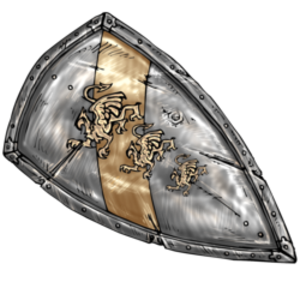Scientific Freedom
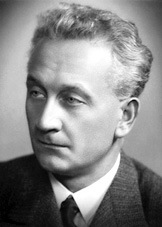
“The real scientist is ready to bear privation and, if need be, starvation rather than let anyone dictate to him which direction his work must take.”
–Albert Szent-Gyorgyi (a.k.a. Albert Szent-Gyorgyi de Nagyraolt, Hungarian-born American Biochemist and, in 1937, Winner of the Nobel Prize in Medicine, 1893-1986)
That’s Funny
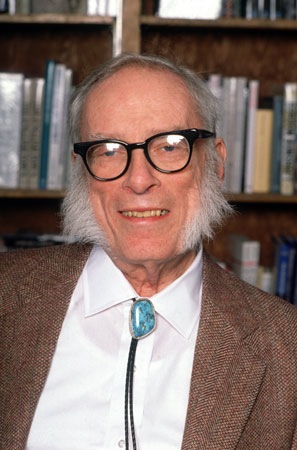
“The most exciting phrase to hear in science, the one that heralds the most discoveries, is not “Eureka!” I found it! but “That’s funny…”
–Isaac Asimov (Russian-born American Biochemist and Writer, 1920-1992)
Science and Poetry
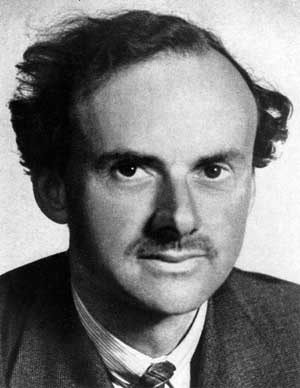
“In science one tries to tell people, in such a way as to be understood by everyone, something that no one ever knew before. But in poetry, it’s the exact opposite.”
–Paul Adrien Maurice Dirac (English Mathematician and Physicist, Lucasian Professor of Mathematics at Cambridge University from 1932-1969, and, in 1933, Winner of the Nobel Prize in Physics, 1902-1984)
Recognizing Scientific Prejudice
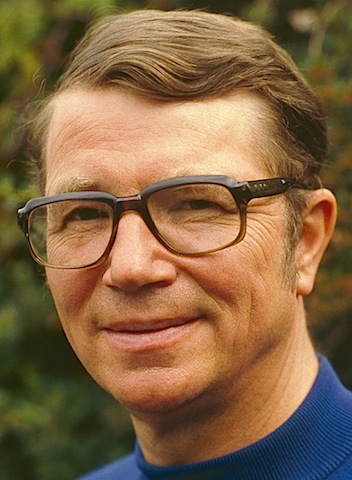
“No matter how honest scientists think they are, they are still influenced by various unconscious assumptions that prevent them from attaining true objectivity. Expressed in a sentence, Fort’s principle goes something like this: People with a psychological need to believe in marvels are no more prejudiced and gullible than people with a psychological need not to believe in marvels.”
–Colin Wilson (English Novelist and Writer on Philosophy, Sociology and the Occult, 1931-)

“Mysteries: An Investigation into the Occult, the Paranormal and the Supernatural” (Colin Wilson)
Science and Religion

“How could science be an enemy of religion when God commanded man to be a scientist the day He told him to rule the earth and subject it?”
–Bishop Fulton J. Sheen (American Roman Catholic Clergyman and Broadcaster, 1895-1979)
Challenging Dogmatism in Science Part 2
Some interesting ideas very nicely expressed.
Who Gets the Credit in Science?
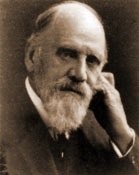
Another comment about scientific discovery:
“In science the credit goes to the man who convinces the world, not to the man to whom the idea first occurred.”
–Sir Francis Darwin (English Botanist, 1848-1925)
Finding Your Ancestors
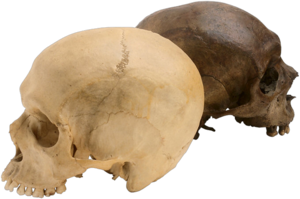
I think that most of us have at least a little bit of curiosity about our ancestry. Growing up in Europe, most people have quite a good idea where they came from. It is very different in the “New World.”
People here often have deeply personal reasons for wanting to know their ancestry. Some hope to validate genealogical records or fill in gaps in family histories. Others are searching for a connection to specific groups or places in Eurasia or Africa. Many African Americans hope to trace ancestral links lost during the slave trade. Other hope to obtaining Native American tribal affiliation or to challenge tribal membership decisions.
Hence the proliferation of services offering genetic analyses to individuals. And it has become big business.
A quick search on Google just found least two dozen companies who market genetic ancestry tests to help people discover the origins of their ancestors. The tests typically cost between $100 and $900, and in the United States alone it is said that more than 460,000 people have purchased the tests during the past six years.
But there have been lingering doubts about the value and accuracy of the tests.
In “The Science and Business of Genetic Ancestry Testing,” which appears in the today’s issue of the journal Science Deborah Bolnick, assistant professor of anthropology at The University of Texas at Austin and 13 researchers from universities across the country call upon the scientific community to educate the public about the limitations of the tests, and also urge consumers to approach the tests with caution.
The writers argue that the assumptions and limitations of the tests make them less informative than many people realize. Secondly, the rapid commercialization of the tests may have led to misleading practices that reinforce misconceptions.
They make several important points:
- Most tests trace only a few of your ancestors
- Most only test a small portion of your DNA
- Tests are not likely to identify all of the groups or locations around the world where a test-taker’s relatives are found
- When we do genetic research we spend a great deal of time checking and re-checking the accuracy of the tests. But commercial tests may report false negatives or false positives
- Limited sample databases mean test results are subject to misinterpretation
- There is no clear connection between DNA and racial/ethnic identity: the similarities between the races are far greater than the differences
- Tests cannot determine exactly where ancestors lived or what ethnic identity they held
There is also an excellent feature story, entitled “Deep Roots,” that may interest you.
Caveat emptor!
The Neuronal Shield
Sometimes Nature does our experiments for us, and nobody – especially any animals – need to get hurt at all.
Diabetes mellitus is one example, in which heart disease, arteriosclerosis and stroke are many times more common than they are in the general population, and give us a perfect place to start looking at some of the causes of arterial diseases in general.
Another, and far more rare, example is a group of brain diseases called lissencephaly, in which whole layers of the cerebral cortex fail to find their homes and develop. The result is a brain that has a fairly smooth surface, rather than being covered in the complex hills and valleys (“gyri” and “sulci”) that cover the surface of the healthy brain. People with lissencephaly usually have quite severe mental retardation, motor problems, muscle spasms and seizures. What normally happens during embryonic development is that the six main layers of the cerebral cortex are generated by neuronal progenitor cells that migrate long distances before they finally find their correct place and settle down. At the beginning of brain development the cells look like an unruly mob trying to find their seats at a concert. Eventually they find their spot, settle down and get to work. The precise spatial organization of these layers of cells is essential to normal cortical functions.
Though lissencephaly is rare, there are other disorders, including some forms of epilepsy and some types of schizophrenia that also result from abnormal migration of nerve cells during the development of the brain.
Researchers from the Mouse Biology Unit of the European Molecular Biology Laboratory (EMBL) in Italy have now discovered that a protein called n-cofilin, that helps organizing the cells’ skeleton is crucial for preventing such defects. In the current issue of Genes & Development they report that mice lacking n-coffin show many of the classic signs and symptoms of lissencephaly.
The skeleton of a cell consists of constantly growing and shrinking filaments that function like strings and struts to give the cell shape and stability, and it is largely responsible for the migration of neurons in the developing brain. N-cofilin interacts with actin – one kind of skeletal filaments – and helps to disassemble them into their individual building blocks. Interfering with this filament remodeling impairs the cell’s ability to move and that blocks migration of neurons during cortical development.
N-cofilin also controls the fate of neural stem cells that are involved in development of the cortex. If it is absent, stem cells stop moving and re-new themselves instead of differentiating. This imbalance depletes the pool of neuronal progenitors cells so that fewer cells can be made to build a complete and functional cortex. The study provides the first proof that proteins affecting actin filament dynamics are involved in neuronal migration disorders.
It is remarkable that a single gene can be so important in the development of the brain, and it opens up new fascinating possibilities for treatment.
The Dark Galaxy
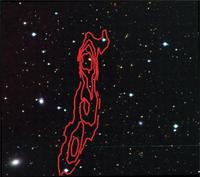
Every time that we think that we’ve got the laws of physics, cosmology and biology nailed down, along comes another observation that has everyone scratching their heads.
So it is with the some very puzzling observations by the Hubble Space Telescope. Deep in space is a mysterious, galaxy-sized cloud of hydrogen known as VIRGOHI21.
Galaxies are thought to coalesce from normal, or baryonic, matter that has collected in clouds of dark matter. Dark matter is still a hypothesis, but a very interesting one. The trouble with this model is that surveys have turned up fewer galaxies than expected, suggesting that, for reasons unknown reasons, some galaxies are stillborn and simply fail to form stars.
When VIRGOHI21 was discovered in 2005 it seemed to provide the first evidence that dark galaxies existed. But other researchers suggested that this mysterious cloud had been pulled out of another galaxy and another passed by. What became known as the “hit and run” model.
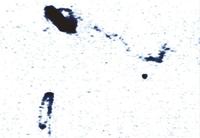
But Robert Minchin of the Arecibo Observatory discounts such “hit-and-run” models. If one galaxy if rushing past another, its gravitational field should pull out some stars as well. And they have not been found. Minchin and his team used the Hubble Telescope to observe a patch of sky 50,000 by 50,000 light years across, centered on the position of the hydrogen cloud. They found only 119 red giant stars. That is the number found in a typical region of the same size in intergalactic space and three times fewer than expected if the cloud were a large piece of celestial wreckage.
These new images they do confirm a mystery raised by previous studies. The object’s normal matter weighs a few hundred million times the mass of the Sun. But its dark matter – inferred by studying the rotation speed of the cloud – appears to weigh at least 100 times as much.
That ratio is much higher than expected – in all other galaxies, dark matter outweighs normal matter by a factor of only 10. “Even if this is a dark galaxy, it is not what you expect to find. The number of baryons is too low,” said Michael Merrifield of the University of Nottingham in the UK, who was not on Minchin’s team.
Minchin agrees that this is a puzzle. A number of surveys at Arecibo and other radio observatories aim to find more examples of dark galaxies, which could shed light on how much dark matter they contain. But so far the surveys are finding little to match the characteristics of VIRGOHI21.
You can watch an animation showing VIRGOHI21 and its two galactic neighbours from a variety of perspectives.
Anyone who thinks that ANY current model has all the answers is sorely mistaken.
I was interested recently to see that a number of authors who have recently re-analyzed several of the pillars of science, and asked whether the current model of evolution – chance happenings leading to large scale change – is mathematically possible. Others have pointed out that Einstein’s reputation is largely built on two pillars: four days of earlier experimental work performed by two scientists called Albert Michelson and Edward Morley. And others have claimed that his first contribution was not original at all, but was a contribution to the theories of two other scientists named Ludvig Lorenz and Henri Poincaré, though he failed to reference them. The second is that experimental work confirmed his theory of relativity, when in fact several experimentalists produced data that did not support him. But they were ignored.
The good news is that we have methods that enable us to ask questions and obtain answers that move our understanding forward just a little more.
What other discoveries are waiting out there? Discoveries that may turn our worldview upside down?
“We must have strong minds, ready to accept facts as they are.”
–Harry S. Truman (American Statesman and, from 1945-1953, 33rd President of the United States, who made the decision to drop the atomic bomb, 1884-1972)


